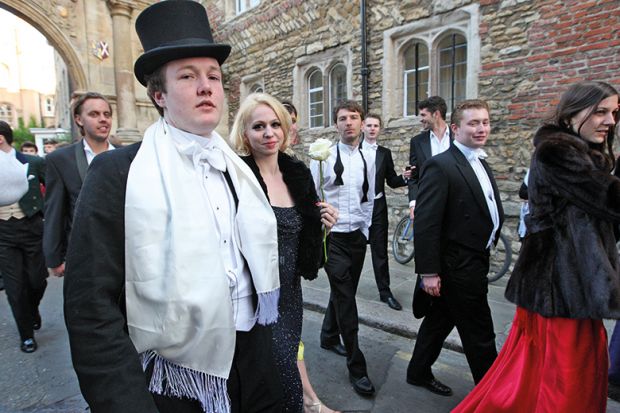The student intake by background in many Russell Group universities is as imbalanced as income inequality in some of the world’s poorest countries, new analysis suggests.
A paper published by the Higher Education Policy Institute says that student cohorts at institutions such as the universities of Oxford, Cambridge and Bristol are so heavily skewed towards those from advantaged areas that they score highly on a measure of inequality normally used to assess income disparity.
The results came from calculating the “Gini coefficient” for UK universities based on their share of student entrants in 2016 that came from the five different POLAR quintiles, a widely used measure of how advantaged an area is, based on levels of higher education participation.
They show that 25 institutions, headed by the University of Hull, achieve a Gini coefficient – which measures the inequality in a distribution from 0 to 1, with 0 being the most equal – for student intake of less than 0.1, indicating that they mirrored broader society very closely by having a relatively similar share of students from each quintile.
But 13 universities, topped by the University of Cambridge with 0.48, had a Gini coefficient of more than 0.4 because their intake tended more towards the most advantaged neighbourhoods measured by POLAR.
Estimates of the Gini coefficient for income inequality by nation suggest that many African countries are above 0.4. The US, also thought of as one of the world’s most unequal societies by income, has been estimated to have a Gini coefficient of 0.45, with the UK at 0.32 and Finland at 0.22, the lowest.
The Hepi paper, written by Iain Martin, vice-chancellor of Anglia Ruskin University, says that the Gini method “provides, in a single number, a simple measure of inequality that is far easier to interpret” than other ways of looking at POLAR data.
“If innate talent and capability were distributed evenly across the population then, consequently, in an ideal world students from all areas would be distributed evenly across institutions with different characteristics,” it adds.
However, Professor Martin acknowledges that there are limitations to the approach. For instance, 11 universities take more than a fifth of their enrolment from the most disadvantaged areas but still end up with a relatively high Gini coefficient because they have small shares from the most advantaged areas.
There are also already well-established problems with using POLAR data, including its inability to properly reflect levels of deprivation in London and Scotland.
Nevertheless, Hepi director Nick Hillman said that the analysis helped to reveal “exactly which universities reflect our society best, and those which have further to travel”. “Everyone benefits when we get the best possible fit between individuals and institutions,” he said.
A Russell Group spokeswoman said that its members were “fully committed to encouraging students from disadvantaged backgrounds to enter and succeed in higher education”.
Find out more about THE DataPoints
THE DataPoints is designed with the forward-looking and growth-minded institution in view
后记
Print headline: Elite worst in equality ranking




